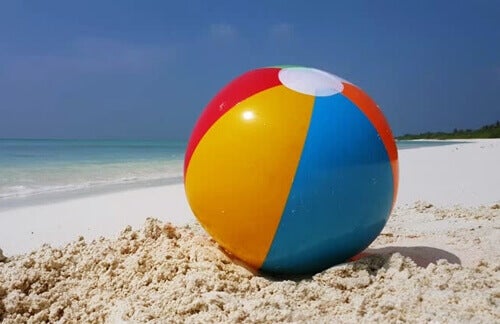The beach ball metaphor is a very useful resource to regulate negative emotions, especially anxiety, it is a strategy that uses visualization and also requires action in another dimension: creativity, each of us addresses our problems of a specific way, and this exercise demonstrates this.
To appreciate the relevance of such tools in psychological practice, it is first necessary to understand what is meant by therapeutic metaphors, it is a series of constructs, stories or rhetorical figures in which the patient must find a relationship between an initial concept and a certain type of associated personal reality.
- For example.
- One of the most well-known therapeutic metaphors is that of quicksand.
- In this exercise the goal is to understand that sometimes the more we struggle with our problems.
- The more we sink.
- The solution.
- In many cases.
- Is to stop and make contact with what we avoid so much.
In this type of resource, the patient must initiate a series of psychological processes that will be of great help during the therapeutic process. First, it is necessary to understand the metaphor. The patient must identify himself and establish a correspondence between what is explained and what happens to him.
Finally, it is necessary for the person to be able to think for himself about a type of strategy that can help him in his life based on the resource presented to him by the psychologist, the latter will act as facilitator at all times. but it will never solve the challenge suggested in this exercise for the patient.
For the balloon metaphor on the beach to take effect and help us, we’ll use the visualization How do psychologists McCurry and Hayes, SC (1992) explain in their Research Clinical and Experimental Perspectives of Metaphorical Speech?The creation of mental images promotes the subsequent memory of metaphors, so we can use them whenever we need them.
Let’s see what this exercise is all about
You are on the beach, it is a quiet and clear day, the light saturates every corner of this perfect setting, but you are not feeling well. You are anxious, many emotions accumulate, all together, all agitated in an almost painful way: do you feel fear, shame, anguish, anger?
The next step in the metaphor of the beach ball requires your effort, as we said at the beginning, this feature requires a touch of creativity, to solve it considers these factors:
Let’s see below what is the most common (and useful) response to this proposition.
The most appropriate strategy is to stop trying to overwhelm that object, you have to stop wasting energy, fight against what is not possible or healthy: trying to overwhelm the ball and hide your emotions is useless, it is not advisable to accumulate this discomfort.
We have to take the ball and sit quietly on the shore. The target? Empty it completely. This way we will feel much better, more relieved, however, you must first know where the valve is, the button that holds the air.
The same goes for emotions. The metaphor of the ball on the beach must be used by each of us to find our specific strategy so that anxiety, fear or shame find a way out, we need to find that mechanism that allows us to understand why we are sorry, facilitating access to the path that will free us from this discomfort.
Getting there is not easy, but at least with this tool we will remember that the ball of our emotions cannot be hidden or submerged, we must accept, understand and liberate the emotional world.

